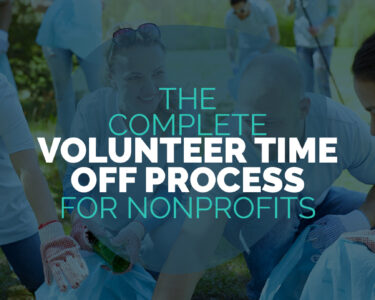A newly released report from the Center for Effective Philanthropy (CEP), “Voices That Matter,” finds that nearly all foundation respondents report actively working to understand the needs of the people and communities they support. Eighty-nine percent say that information provided directly by those they seek to benefit is useful for shaping their work, and more than three quarters say they get feedback from their nonprofit partners about the grantmaking experience.
On the surface, these findings indicate widespread recognition that listening matters. Fund for Shared Insight, the national funder collaborative in which we play key leadership roles, supported this report and the underlying research because we believe in the importance of listening and wanted to learn more about how funders — and nonprofits — listen to the people and communities at the heart of their work.
The findings are encouraging in many ways. But they also invite deeper reflection. After all, most people also believe they’re good listeners — and evidence suggests they’re often wrong.
In one widely cited study conducted by Accenture, 96 percent of the 3,500 professionals surveyed rated themselves as good listeners. While it’s possible that Accenture somehow stumbled across a survey population that included a statistically improbable number of great listeners, it seems more likely that survey respondents tend to over-report their listening skills and behaviors.
This pattern shows up in educational settings, too. In a leading college textbook on listening, the authors describe how students often rate themselves highly as listeners at the start of a course. But once they begin to explore what good listening actually entails, their self-ratings drop — suggesting, in the authors’ words, that “people’s perceptions of their own listening behaviors may not always align with reality.”
That same thing may also be true for philanthropy. Most foundations say they value listening and believe they understand what grantees and communities need. However, there is a lot of evidence pointing to the disconnect between what foundations say they do and what they actually do, and between intention and practice.
In a 2019 report commissioned by the Hewlett Foundation and authored by Valerie Threlfall and Rebecca Klein of ekouté consulting, the authors describe a significant intention-action gap when it comes to foundation listening. The contradiction is stark: Foundation leaders strongly support the idea that listening is core to achieving philanthropic goals, yet that belief hasn’t translated into meaningful practice. As one foundation representative candidly admitted in the study, “the failing here is for our team to actually walk the walk, rather than just say we have these principles. There’s a big gap between what we say and what we do.”
This disconnect appears in CEP’s research. In “Voices That Matter,” while 71 percent of foundation leaders believe their funding priorities are “very well aligned” with community needs, only 24 percent of nonprofits say most or all of their funders have funding priorities that reflect a deep understanding of those needs — and only 32 percent of nonprofits say most or all of their funders have a deep understanding of community needs in the first place.
Comparing the recent nonprofit survey results to a comparable data set from 13 years ago, “Voices that Matter” notes that “there has been very little change over time in the number of funders that nonprofits believe have a deep understanding of community needs.” And while 90 percent of foundations say they communicate back to communities about changes made, less than 30 percent of foundations say they “always” close the loop with community members.
This pattern reveals not just one gap, but several connected ones: The gap between intention and action — foundations say they value listening to and closing the loop with community but don’t always follow through; the gap between how we see ourselves and how others see us — foundation leaders believe they understand community needs well, while nonprofits report otherwise; and potentially the gap between what funders fund and what is actually needed — just one of the many reasons why listening is so important.
We talk about listening all the time, but many of us in philanthropy may not share a common definition of listening or understand what listening really requires. The student study referenced early on illustrates this: When students were asked about their listening skills, their confidence declined after they had a chance to learn about what it actually means to listen. The same may be true for funders.
Too often, foundations conflate listening with just collecting feedback, or assume that occasional conversations are enough. But at Shared Insight, we view listening as an ongoing process grounded in relationships and partnership, not a one-time exercise. Listening well includes closing the loop — circling back to those who shared their perspectives to let them know what was heard and how the foundation plans to respond. And it requires an explicit understanding of how power operates within funding relationships, with the goal of moving from exercising power over communities to working in partnership with them to meet needs and solve problems together.
We’ve seen what becomes possible when foundations embrace this approach. The Ford Family Foundation spent four years in Yoncalla, Oregon, building relationships and trust before a preschool ever opened, asking what the community wanted for itself. The St. Louis, Missouri-based Deaconess Foundation engaged 663 people across their region and let what they heard fundamentally reshape not just their programs, but their mission, vision, and values. The William Penn Foundation in Philadelphia listened to the community when they said they didn’t want new programs and services, but rather for the Foundation to invest in improving existing parks and in housing.
These three examples illustrate what happens when foundations treat listening as a relationship, not a transaction. It builds trust with the community, but it also improves decisions and strengthens outcomes. This means integrating community perspectives into strategy and decision-making — not just into reporting or storytelling.
What’s at stake is more than philanthropic effectiveness. When listening is surface-level — when it doesn’t lead to change — it can reinforce distrust and widen the very gaps funders aim to close. Grantees may feel pressure to say what funders want to hear. Community members may disengage. And over time, the relationship between funders and impacted communities can start to feel forced or performative, disrespectful, or like a waste of time.
This is particularly costly in a challenging time for the nonprofit sector, when political and social divisions are deepening and equity work is being attacked and misunderstood. In this context, listening might feel risky — it can expose gaps, challenge assumptions, and raise uncomfortable truths. But the alternative — retreating into insularity — is far riskier. This is a moment that calls for deeper listening.
Given these stakes, how should we respond to CEP’s new report on listening? Do we conclude that everything is fine — that foundations care about listening and are already doing enough? After all, 89 percent of foundations say they use information provided directly by communities, and most say they close the loop, at least sometimes.
Or do we take the opportunity to ask whether the kind of listening we’re doing resonates with those being listened to, and whether it changes anything. Does it reflect a genuine desire to learn, to grow, to be accountable — or is it surface-level?
The “Voices That Matter” report offers an opportunity. Not to pat ourselves on the back, but to reflect. Not to defend what we’re doing, but to ask: What more is possible? At Fund for Shared Insight, we believe in listening not as an end in itself, but as a way to build more effective, more equitable, and more accountable philanthropic institutions. We supported this research because we want philanthropy to do better — and because we hope others will want to do better, too.
Melinda Tuan is managing director of Fund for Shared Insight. Find her on LinkedIn. Rick Moyers is communications director of Fund for Shared Insight and a Ph.D. student at James Madison University. Find him on LinkedIn.
👇Follow more 👇
👉 bdphone.com
👉 ultractivation.com
👉 trainingreferral.com
👉 shaplafood.com
👉 bangladeshi.help
👉 www.forexdhaka.com
👉 uncommunication.com
👉 ultra-sim.com
👉 forexdhaka.com
👉 ultrafxfund.com
👉 bdphoneonline.com
👉 dailyadvice.us




